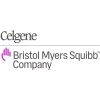
To Evaluate Efficacy and Long-term Safety of Ozanimod in Japanese Subjects With Moderately to Severely...
ColitisUlcerativeJapanese patients with moderate or severe active ulcerative colitis as a subject when ozanimod 0.46 mg or 0.92 mg is orally administered is evaluated about dose response, efficacy and safety with placebo as a control.

BB-101 for Treatment of Diabetic Lower Leg and Foot Ulcers
Diabetic Foot UlcerThis is a randomized, double-blind, placebo-controlled, sequential dose escalation study in diabetic subjects with a diabetic lower leg or foot ulcer. All subjects will receive standard-of-care ulcer treatment from screening through the last study visit.

Use of Low-level Laser Therapy in the Treatment of Diabetic Foot Ulcers
Diabetic Foot UlcerDiabetic FootDiabetes mellitus (DM) is currently an important cause of morbidity and mortality. Global estimates indicate that 382 million people live with diabetes (8.3%), and that number could reach 592 million in 2035. The diabetic foot ulcers (DFU) present as sore wounds with disintegration of the skin. The DFU affect 15% of diabetic patients. Several studies have been conducted aiming to find therapeutic strategies for the healing of DFU, among the reported therapeutic methods the Low-level Laser Therapy (LLLT) has been highlighted. The aim of this study is to investigate the effects of different doses of LLLT in the treatment of DFU. Methods: This study is characterized as a double-blind randomized clinical trial (RCT), consisting of four groups, the control group will have only dressing and placebo LLLT application and the other three groups will have dressing and real LLLT GaAs 904 nm application. Expected outcomes: to elucidate the effects of different doses of LLLT GaAs 904 nm on the treatment of DFU, beyond to identify the most effective dose.

A Study of Guselkumab in Participants With Moderately to Severely Active Ulcerative Colitis
Ulcerative ColitisThe purpose of this study is to evaluate the efficacy and safety of guselkumab in participants with moderately to severely active ulcerative colitis (UC).

Role of Intestinal Protozoa and Helminths in the Course of Ulcerative Colitis
Ulcerative ColitisUlcerative Colitis Exacerbation2 moreUlcerative colitis (UC) is a chronic inflammatory disorder of the gastrointestinal tract of unknown etiology. UC is characterized by recurring episodes of inflammation limited to mucosal and submucosal layers of the colon. The object of the present study was to determine the prevalence of intestinal protozoa and helminthes in UC patients, and the role of this changes in aetiopathogenesis of diseases. Patients will be examined before and after therapy. Parasites and protozoa prevalence and intensity will be detected by triple coproscopy.Microbiological study will be conducted before therapy for detection pathogenic bacteria only from UC patients infected with B. hominis . If intestinal pathogenic bacteria are found, participants will be excluded from further investigation.

A Phase 2a Open-Label Study to Evaluate the Efficacy and Safety of MORF-057 in Adults With UC
Inflammatory Bowel DiseasesColitis1 moreThis is an open-label, single arm, multicenter, Phase 2a study evaluating the efficacy, safety, and tolerability of MORF-057 in adult patients with Moderately to Severely Active Ulcerative Colitis (UC)

Feasibility and Tolerance Study for the Treatment of Varicose Ulcers by Cyanoacrylate Glue (ETUVVE)...
Venous Leg UlcerUlcers of the lower limbs are a major public health problem whose management needs to be further improved, particularly in terms of healing time, prevalence and recurrence rate. Ulcers of venous origin, or mixed arteriovenous and predominantly venous, represent the majority of leg ulcers with an estimated proportion of 70 to 80% of cases. These are painful, disabling conditions that are difficult to treat in a lasting way. This study focuses on a treatment strategy with endovascular glue. The advantage of treating ulcers with cyanoacrylate glue is the possibility of occluding the great saphenous vein over its entire length, freeing itself from neurological complications secondary to endovenous thermal techniques (laser, radiofrequency), as well as the possibility of treating by direct puncture any perforators or tributaries feeding the ulcer. This treatment strategy would improve the healing process for a lasting resolution of this pathology. This study aims to describe the feasibility and tolerance of this type of treatment in the resolution of varicose ulcers.

A Study of the Safety, Efficacy, and Biomarker Response of BMS-986165 in Participants With Moderate...
ColitisUlcerativeThe purpose of this study is to assess the safety and tolerability, efficacy, and biomarker response of BMS-986165 administered orally in participants with moderate to severe ulcerative colitis. The study was originally designed to test deucravacitinib at two doses for 12 weeks compared to placebo. After the initial 12-Week period, all subjects receive active therapy (open-label extension). With protocol amendment 2, one of the dose treatment arms is being removed from the 12-week double blind period with no change to the open-label extension.

Tofacitinib for Hospitalized Acute Severe Ulcerative Colitis Management
Ulcerative Colitis AcuteThe TRIUMPH study was designed to build on the existing literature by studying the efficacy of tofacitinib in hospitalized patients with acute severe ulcerative colitis. This trial will provide evidence for a possible new indication for the use of tofacitinib.

Efficacy and Safety Evaluation of the Intralesional Recombinant Human Epidermal Growth Factor (rhEGF)...
Foot UlcerDiabetic1 morePhase III clinical trial, multicenter, controlled, randomized, double-blind, with two parallel groups (experimental and control). Both study groups will receive standard therapy currently available in treatment centers for diabetic foot ulcer (DFU). Associate with the standard therapy, it will be given the recombinant human Epidermal Growth Factor (rhEGF) to experimental group and in the control group, it will be given a formulation without pharmacological effect (placebo) in order to masking and control of intralesional application. Participants with type 1 and type 2 diabetes mellitus (DM) diagnosed with DFU for at least 4 weeks, treated in referral centers participating in the study, agreeing to participate after reading, understanding and signing of Informed Consent (IC); meet all the inclusion criteria; and presenting no exclusion criteria. The Informed Consent (IC) should be applied to potential participants, as recommended by the regulations and ethical consensus before beginning any procedure related to the clinical trial. In the early weeks, participants will be evaluated at the research centers by the study team (doctors and / or staff). The number of visits will be determined by the investigator, thus ensuring appropriate assistance to participants, and avoiding any complications with DFU. By meeting the eligibility requirements (inclusion and exclusion criteria), the participant will undergo a thorough evaluation of the DFU before the start of treatment. This assessment is precisely to classify the condition of the ulcer before treatment and provide relevant information for statistical analysis of the protocol. If eligible, the participant will be randomly set to treatment arm (placebo or rhEGF) and the administration of investigational product associated with predefined standardized outpatient therapy will be initiated. This administration occurs three times per week until the DFU is scarred, not exceeding 8 weeks of treatment (T.01 to T.08) .The study will be randomized and balanced according to the type and size of the DFU. This balancing is necessary to ensure that both treatment groups are homogeneous for participants under different conditions. All participants will be applied established standard therapy for the treatment of DFU. The objective is to provide regular care for healing and reduce possible bias in the efficacy analysis and product safety. After the treatment period (last dose of the experimental drug) the participant will start the follow-up period, with 16 weeks duration. The participant shall be subjected to weekly visits for ongoing assessment of DFU, however, according to the investigator, may result in unscheduled visits to assess local or general clinical events. After the monitoring period, the participant will be observed for 24 additional weeks, visits every 4 weeks (E.01 E.24 a) having beginning one week after the last visit of follow-up. This period is intended to assess possible events related to the efficacy and safety that can happen in the period, mainly for analysis of secondary endpoints.
